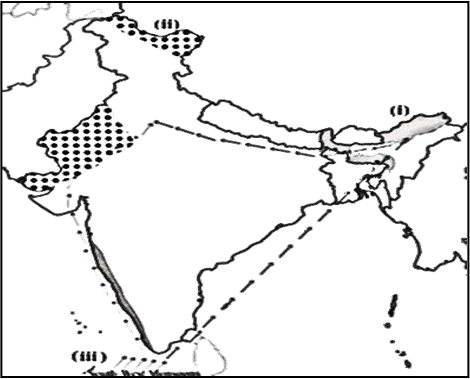NCERT for Chapter 4 Climate Class 9 Questions and Answers - FREE PDF Download
NCERT Solutions for Class 9 Social Science Geography Chapter 4 Climate
FAQs on NCERT Solutions for Class 9 Social Science Geography Chapter 4 Climate
1. What is the Topic of Discussion in Class 9 Geography Chapter 4 Climate PDF? How to Avail NCERT Solutions for FREE?
The topic of discussion in Chapter 4 Climate Class 9 NCERT solutions is the climate of India. This chapter begins with a general introduction to weather and then moves on to explain the salient features of the Indian climate. It includes a detailed discussion about the three primary seasons noticed in India along with a thorough explanation of the monsoon in this country, and its effects on this country. Students can easily avail NCERT solutions from websites like Vedantu for free in PDF format.
2. What are the controls affecting the climate of India according to Chapter 4 of Class 9 Social Science Geography?
The question is from Chapter 4 of Class 9 Geography. Several factors affect the climate of India. The six controls are listed below:
Latitude
Altitude
Pressure and Wind system
Ocean currents
Distance from the sea
Relief features
All solutions to NCERT Class 9 Social Science are given in easy and simple language on the official website Vedantu. Students can refer to NCERT Solutions of Class 9 Social Science for the preparation of their exams.
3. What is climate according to Geography Class 9 Chapter 4 Question Answer?
Climate is defined as the average weather of a place taken over for many years. Climate does not change every day. It takes thousands of years to change. The climate of a place remains constant throughout the year. Students can download the NCERT Solutions for class 9 social science Chapter 4 from the internet. The solutions can help students to understand the definition of climate easily and prepare for the exam.
4. What is the weather according to Chapter 4 of Class 9 Social Science Geography?
Weather may be defined as the day-to-day change in the temperature of a given place. In other words, weather refers to the change in temperature, humidity, the possibility of rain, and other features. The weather of a place keeps changing frequently. It is predicted by the Meteorological department. Weather predictions help people to make suitable changes in their day-to-day activities.
5. Describe India's climate according to Class 9th Geography Chapter 4 Question Answer?
India has a monsoon type of climate in which there is a unique seasonal pattern. The weather conditions change from one season to another. The changes are easily noticeable by the people. People living in the coastal areas may not experience much temperature change. There are four seasons in India - cold season, hot season, advancing monsoon, and retreating monsoon. Some regional variations may also occur at some places.
6. What are the main topics in Chapter 4 of Class 9 Social Science Contemporary India?
Chapter 4 of Class 9 Social Science is based on climate. In this chapter, students will first study about the difference between climate and weather. They will also study different types of climates in the different parts of the world. Next, they will study the factors affecting the climate of a place. Students can understand the details of the chapter using the NCERT Solutions for Class 9 Social Science Contemporary India Chapter 4 available on Vedantu.
7. What are the effects of climate on agriculture in India according to Class 9th Geography Chapter 4 Question Answer?
Climate directly affects crop patterns, yields, and farming practices in India. The timing and amount of rainfall significantly impact agricultural productivity.
8. How does climate vary across different regions of India in Climate Class 9 Questions and Answers?
The climate varies significantly from region to region in India. Coastal areas experience moderate temperatures due to oceanic influences, while the northern plains can have extreme temperatures ranging from very hot summers to cold winters.
9. How does studying Climate Class 9 Questions and Answers help in understanding environmental issues?
Understanding climate helps in predicting natural disasters, managing water resources, and planning sustainable development practices to mitigate climate change impacts.
10. What are the factors that influence India's climate in Class 9 Geography Chapter 4?
India's climate is influenced by factors such as latitude, altitude, distance from the sea, and the presence of mountain ranges like the Himalayas. Students can refer to the Climate Class 9 PDF to learn more about the chapter.














 Watch Video
Watch Video















